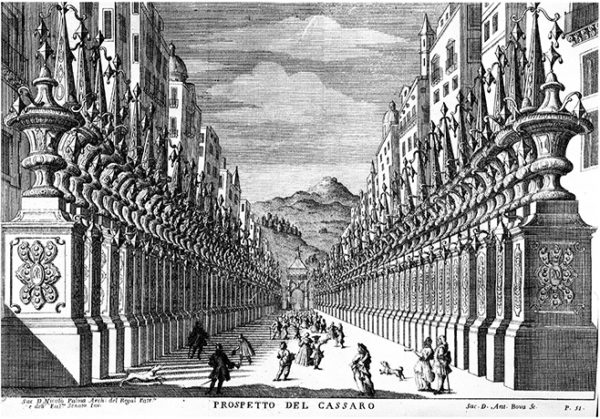The Cassaro Vecchio, historic street of Palermo

Where does the word cassaro come from
The word “Cassaro” comes from the Arabic al Qasr, meaning “castle”.
Where is the Cassaro?
Today it coincides with the area of via Vittorio Emanuele , one of the most important arteries of Palermo.
A bit of history and the beauties of the Cassaro
The road was traced by the Phoenicians and cut the urban center in two parts, connecting the original port to the necropolis.
In the Arab era it became the main road axis, from which the various secondary roads branched off.
In vicolo Castelnuovo , which starts right from via Vittorio Emanuele, there is Palazzo Cottone , in Baroque style, with an elegant porticoed atrium.
Proceeding to the Cassaro you come across an eighteenth-century palace with a portal and atrium.
In the contiguous vicolo San Giuseppe there is a pretty aedicule, from 1794, of the Virgin of Grace.
In the second half of the 17th century, the wealthy Basilian nuns had the ambition to build a temple that was among the most sumptuous in the city.
They entrusted the project to the famous architect Paolo Amato . Thus was born the church of the Santissimo Salvatore , one of the highest examples of Palermo’s flowery baroque, which was consecrated in 1704.
Of the many works present once there remains only a crucifix with the saints Michael the Archangel and Cajetan.
Attached to the church was the Basilian monastery, founded in 1072.
It was one of the largest in the city, but it was almost completely destroyed by bombing.
In the ascent of the Santissimo Salvatore you will notice Palazzo Natoli, from 1765, while the church of Santa Maria del Giusino is located in the alley of the same name. It houses six allegorical stucco statues by Giacomo Serpotta . In via del Protonotaro there are the remains of a Norman building. Opposite is the eighteenth-century Palazzo Papè di Valdina . The church of San Giovanni l’Origlione is located in the square of the same name.
You will notice it for the remarkable sculptural decorations. The interior is decorated with gilded stucco. Interesting, in the altar on the right, a large painting from the late eighteenth century representing the Destruction of idols.
Also in this area is the Collegio Massimo dei Jesuiti, today the seat of the Sicilian Regional Library.
It is accessed through the portal of the former church of Santa Maria della Grotta and its characteristic arched courtyard. The palace, damaged by the Second World War, has undergone radical restorations. A large staircase, erected by sacrificing the interior of the church, leads to the library full of about four hundred thousand volumes, including collections of autographed texts, correspondence, incunabula, illuminated manuscripts. Attached to the former Jesuit college is the church of Santa Maria della Grotta, built in 1615 and embellished with decorations in 1700. Also nearby, the seventeenth-century Palazzo Mango di Casalgerardo . The walk in the Cassaro continues with a visit to Palazzo Castrone , one of the most significant examples of civil architecture of mannerism that arrived in Sicily in the second half of the sixteenth century. In the courtyard there is an original aedicule with a sixteenth-century fountain adorned with the sculptures of Perseus and Andromeda.
- Where does the word cassaro come from
- Where is the Cassaro?
- A bit of history and the beauties of the Cassaro
- Map
Italian Version
Updated on: 19/08/2022 00:42:57
translated with machine translation